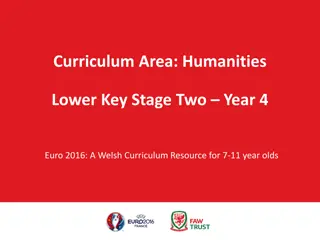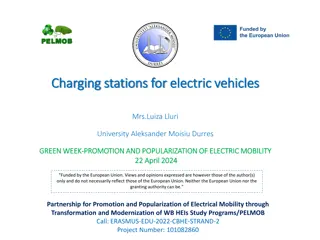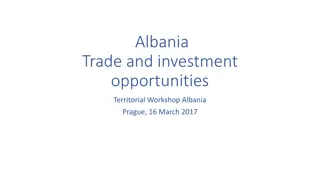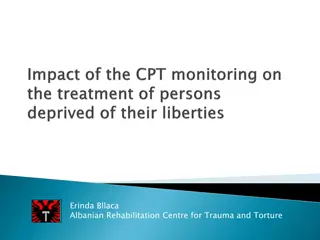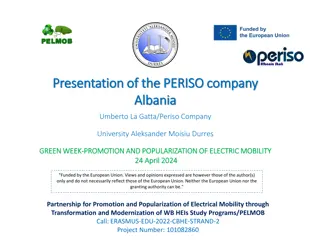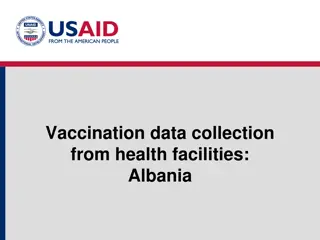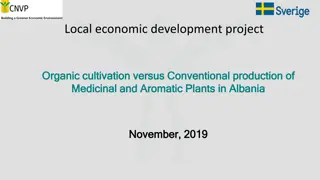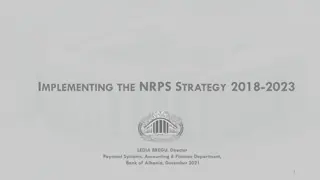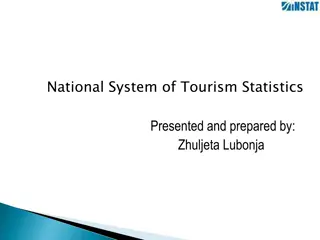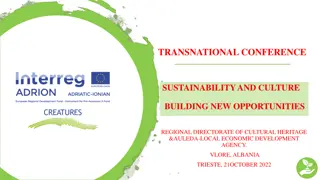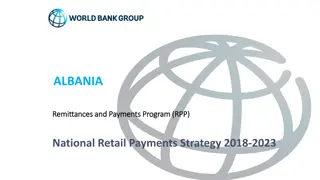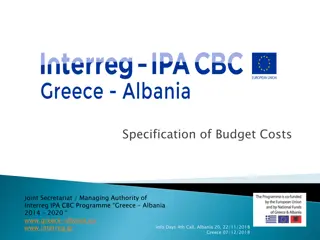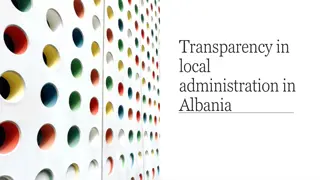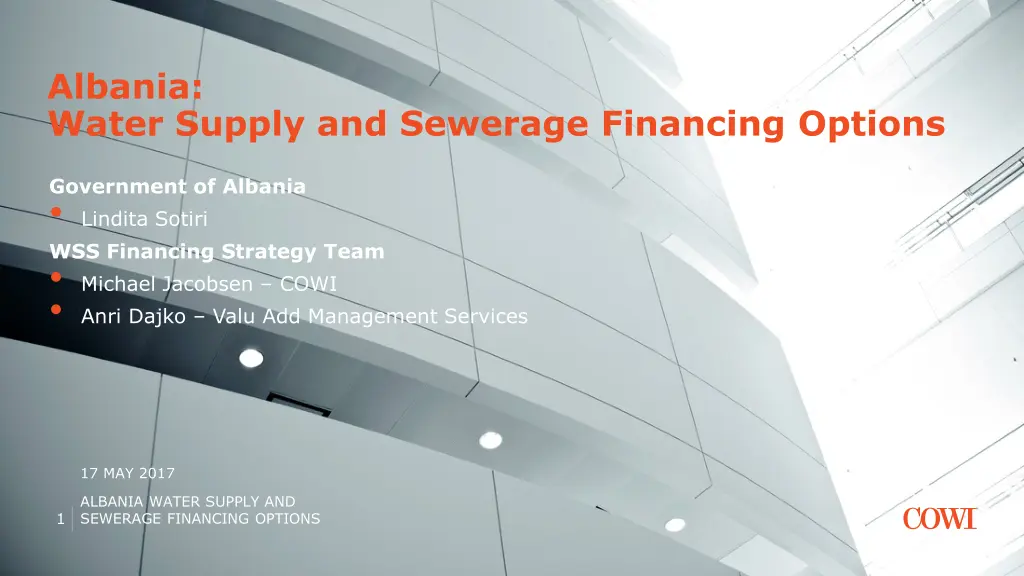
Albania Water Supply and Sewerage Financing Analysis
Discover the rationale and organization, policy observations, and recommendations for water supply and sewerage financing in Albania. Learn about the study's purpose, scenario analyses, and options for addressing the financing gap. Explore the benefits of the analytical model and the risks associated with the new approach. Find insights into supporting the government in developing a WSS financing vision and improving tariff setting for water services.
Download Presentation

Please find below an Image/Link to download the presentation.
The content on the website is provided AS IS for your information and personal use only. It may not be sold, licensed, or shared on other websites without obtaining consent from the author. If you encounter any issues during the download, it is possible that the publisher has removed the file from their server.
You are allowed to download the files provided on this website for personal or commercial use, subject to the condition that they are used lawfully. All files are the property of their respective owners.
The content on the website is provided AS IS for your information and personal use only. It may not be sold, licensed, or shared on other websites without obtaining consent from the author.
E N D
Presentation Transcript
Albania: Water Supply and Sewerage Financing Options Government of Albania Lindita Sotiri WSS Financing Strategy Team Michael Jacobsen COWI Anri Dajko Valu Add Management Services 17 MAY 2017 ALBANIA WATER SUPPLY AND SEWERAGE FINANCING OPTIONS 1
Albania Water Supply and Sewerage Financing Options 1. Rationale for and Organization of Study 2. Purpose and Structure of the Financial Analysis Tool 3. Scenario Analyses and Policy Observations and Recommendation 17 MAY 2017 ALBANIA WATER SUPPLY AND SEWERAGE FINANCING OPTIONS 2
1. Rationale for and Organization of Study What Drove Us to Undertake the Study? We felt we knew our water supply and sewerage services objectives. We has a strong feeling that we had a serious financing gap. We lacked the harmonization of needs with wants and the real possibilities for going forward. We had no clear methodology to understand and address the gap. 215 MARCH 2017 ALBANIA WATER SUPPLY AND SANITATION SECTOR STRATEGY 3
1. Rationale for and Organization of Study Purpose of Study 1. To support the Government (Water for People working group) in developing a WSS financing vision 2. Show options for redesign of investment flows and instruments (efficiency, targeting of investments, links to performance) 3. Support improvement to the tariff setting (fixed and variable components, policies and practices of regulator) 4. Assess tariff level and affordability issues 5. Assess subsidy scheme and coping cost (outside the Financial Strategy Model) 215 MARCH 2017 ALBANIA WATER SUPPLY AND SANITATION SECTOR STRATEGY 4
5. Policy Observations and Recommendation Benefits of the Analytical Model Provides for informed decision making. Allows for realistic considerations of scenarios. Supports the development of a Concrete Road Map that accommodates integrated and harmonized interventions. 17 MAY 2017 ALBANIA WATER SUPPLY AND SEWERAGE FINANCING OPTIONS 5
5. Policy Observations and Recommendation But There Are Risks to Consider!!!! New approach needs time and capacities. Many stakeholders challenge to be in the same boat. Requires political will and support and not populism. 17 MAY 2017 ALBANIA WATER SUPPLY AND SEWERAGE FINANCING OPTIONS 6
5. Policy Observations and Recommendation Next Steps Raise awareness across Ministries and Institutions. Implement the Road Map and monitor progress. Train staff to maintain, update and apply the model. Support the further application/replication of the model to the other three (3) thematic groups/sectors under the National Water Council. 17 MAY 2017 ALBANIA WATER SUPPLY AND SEWERAGE FINANCING OPTIONS 7
3. Purpose and Structure of the Financial Strategy Tool Purpose of the Financial Strategy Tool Financial model in Excel developed for Albania to support the analysis of various financing options in the WSS sector. Tariff affordability analysis to assess level of tariff and impact on the poorest of the poor . Scenarios of measurable improvements in WSS services defined with Government Calculation of associated financing needs for these scenarios. Excel-based model ensures internal consistency between policy targets, expenditure needs, and available financing. When there is inconsistency, the tool shows a financing gap. "The purpose of computing is insights not numbers" Hamming, R.W. (1962) in Numerical Methods for Scientists and Engineers. McGraw-Hill 17 MAY 2017 ALBANIA WATER SUPPLY AND SEWERAGE FINANCING OPTIONS 14
3. Purpose and Structure of the Financial Strategy Tool Structure of the Financial Analysis Model Four Distinct Groups: Each with Modules and Segments First Group are the policy-oriented (Cockpit, Scenarios and Assumptions) sheets. Policy-maker enters the desired targets for the water sector. These targets may be entered at national level and /or at local government level. Second Group is the input data sheet. These are partly factual data on the water sector and partly projections for the future such as population projections, projections of income growth, price responsiveness of demand etc. These data are entered at the local government level and for each water utility Third Group is the calculation sheet. Here, all calculations are done in the model. Fourth Group is the summary statistics and outputs sheet. Here, calculated results are presented at the various geographical levels (national, municipal and rural versus urban) and presented in tables and figures 17 MAY 2017 ALBANIA WATER SUPPLY AND SEWERAGE FINANCING OPTIONS 15
4. Scenario Analysis Three of the Scenarios Analyzed with Government Scenario 1: Government objectives as originally expressed by Water for People Working Group and specified in Steering Committee meeting in November 2015. Scenario 2: Similar, but with the rate of investment lowered / coverage expansion slower so that it is not as heavily loaded in the early years. Scenario 3: A realistic alternative specifically intended to meet the policy vision of the Water for People Working Group and the performance objectives of the Government, while providing a clear path towards EU compliance. A realistic mix of expansion of coverage, tariff increases and changes in structure, efficiency improvements in energy, staff etc. and enhanced maintenance 17 MAY 2017 ALBANIA WATER SUPPLY AND SEWERAGE FINANCING OPTIONS 18
4. Scenario Analysis Scenario 1 Applied assumptions: Tariffs are increased to covers all operating costs in 2020 (approx. 130 lek/m for water supply plus the fixed connection fee, plus wastewater if applicable starting from 52 lek per m for water supply in 2014). Investment funding from national and international sources are retained at the average level of the past 10 years (approximately 50 million EUR annually). Results: Financing needs of all utilities in Albania is highly negative in the first five years, and stays negative in every single year. Not Feasible. Performance Target Measure Base Year 2014 62 89 36 36 63 6 2020 2027 2040 Water Service Coverage % of Population % of Population % of Population % of Population % of Population % of Population Urban Rural 95 75 97 80 99 90 Sewerage Coverage Urban Rural 95 25 97 40 99 75 Wastewater Treatment Coverage Urban Rural % of Population % of Population % of System Input % of Current Bills Hours/Day 12 0 67 50 0 45 97 40 30 99 75 25 Non-Revenue Water Collection Efficiency Continuity of Service Cost Coverage-Collections Direct Operating Cost 91 13 93 18 96 20 98 24 % % 98 73 110 80 120 90 130 100 Total Cost 17 MAY 2017 ALBANIA WATER SUPPLY AND SEWERAGE FINANCING OPTIONS 19
Scenario 1: Funding Gap & Tariff Affordability 17 MAY 2017 ALBANIA WATER SUPPLY AND SEWERAGE FINANCING OPTIONS 20
1. Brief overview of sector and funding Regional comparison shows that tariffs in Albania are low and affordable Share of households that pay more than 3 per cent of their income for WSS 15 MARCH 2017 ALBANIA WATER SUPPLY AND SANITATION SECTOR STRATEGY 21
4. Scenario Analysis Scenario 2 Applied assumptions: Water supply service in rural areas is expanded more slowly, and, in particular, provision of urban wastewater collection and treatment is slower than in Scenario 1. With no overall change in cash flow, this scenario only lessens the annual financial shortfall in the early years. Results: Scenario 2 demonstrates that unless investments are combined with both very substantial increases in both grants and loans for the initial financing as well as very substantial increases in tariffs it is not possible to arrive at a feasible scenario. Not Feasible. Performance Target Measure Base Year 2014 62 89 36 36 63 6 2020 2027 2040 Water Service Coverage % of Population % of Population % of Population % of Population % of Population % of Population Urban Rural 92 50 97 75 99 90 Sewerage Coverage Urban Rural 78 20 80 35 99 75 Wastewater Treatment Coverage Urban Rural % of Population % of Population % of System Input % of Current Bills Hours/Day 12 0 67 47 16 45 80 41 30 99 75 25 Non-Revenue Water Collection Efficiency Continuity of Service Cost Coverage-Collections Direct Operating Cost 91 13 93 18 96 20 98 24 % % 98 73 110 80 120 90 130 100 Total Cost 17 MAY 2017 ALBANIA WATER SUPPLY AND SEWERAGE FINANCING OPTIONS 22
Scenario 2: Funding Gap & Tariff Affordability 15 MARCH 2017 ALBANIA WATER SUPPLY AND SANITATION SECTOR STRATEGY 23
Scenario 3 Water for People Affordable Policy Package Performance Target Measure Base Year 2014 62 89 36 36 63 6 2020 2027 2040 Significant increase in sewerage coverage, both urban and rural, but less than originally envisaged Significant increase in rural water coverage, but less than originally envisaged Efficiency improvements Enhanced maintenance (1% of assets p.a.) Tariff increases no more than 10 per cent per year, keep affordable. Total tariff lower than in Scenarios 1 and 2! Water Service Coverage % of Population % of Population % of Population % of Population % of Population % of Population Urban Rural 92 40 97 65 99 80 Sewerage Coverage 80 50 Urban Rural 65 15 70 25 Wastewater Treatment Coverage 80 50 38 Urban Rural % of Population % of Population % of System Input % of Current Bills Hours/Day 12 0 67 50 15 59 70 25 47 Non-Revenue Water Collection Efficiency Continuity of Service Cost Coverage-Collections Direct Operating Cost 91 13 94 14 96 18 98 22 % % 98 73 >150 89 >200 94 >230 92 Total Cost 17 MAY 2017 ALBANIA WATER SUPPLY AND SEWERAGE FINANCING OPTIONS 24
Scenario 3: Funding Surplus Gap & Tariff Affordability 117 MAY 2017 ALBANIA WATER SUPPLY AND SANITATION FINANCING OPTIONS 25
5. Policy Observations and Recommendation A vision for a funded WSS strategy For Albania to implement its water sector reforms, the Policy Package must include: Investments leading to service level improvements Policy measures to enhance efficiency in operations Substantial tariff increases Requests to IFI s and the Ministry of Finance for increases in funding The "Water for People Policy Package" that is shown combines Government targets with what is doable A corollary: Unless there is a political will on tariffs and to significantly increase the Albanian Government s budget support to meet the sector s investment needs; then it will be next to impossible to achieve EU similar service levels, even by 2040 17 MAY 2017 ALBANIA WATER SUPPLY AND SEWERAGE FINANCING OPTIONS 26
5. Policy Observations and Recommendation Components of the policy package Government capital investment spending would be at current levels through 2019 and increase to 30 35 million Euro per year thereafter IFI capital investment spending would be at current levels through 2019 and increase to 75 million Euro per year thereafter Average Combined Tariff for water supply and sewerage services would increase at the rate of 5% per year through 2030, and then no more increase. In 2014 tariff is 65 lek/m3 increasing to 95 lek in 2020; 130 lek in 2027; and 150 lek in 2040 Sewerage Coverage and WWTP in urban areas reach 80 % by 2040 Sewerage Coverage and WWTP in rural areas reach 40 % by 2040 Significant improvements in efficiency, partly due to EE investments 17 MAY 2017 ALBANIA WATER SUPPLY AND SEWERAGE FINANCING OPTIONS 27


